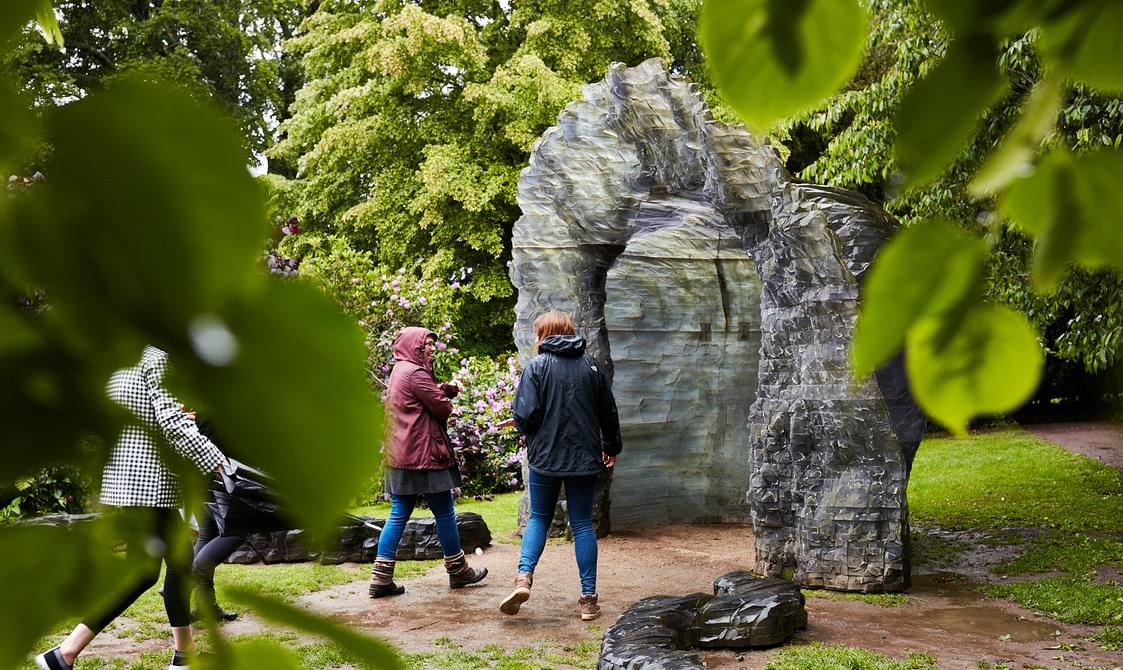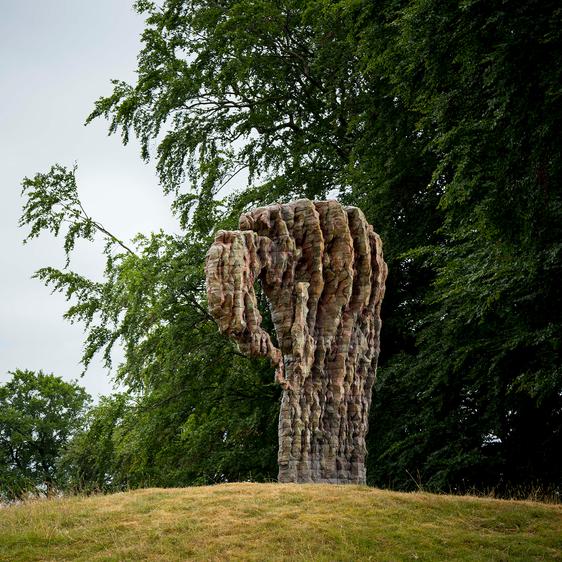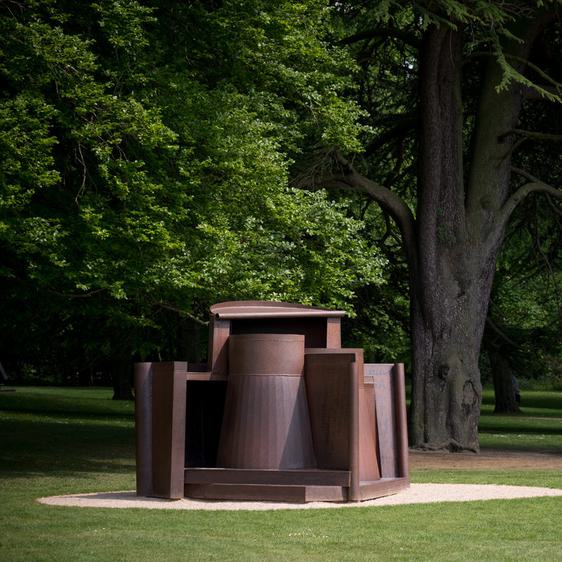
Ursula von Rydingsvard: Damski Czepek
Art Outdoors /Ursula von Rydingsvard: Damski Czepek
Clothing and fabric are recurrent themes in von Rydingsvard’s work, expressed through abstracted forms relating to traditional collars, aprons, and lace. These ideas originate from the physical and tactile side of her memory, where her Polish heritage is vitally important. Damski Czepek translates as ‘lady’s bonnet’, and has a central hood-like form, with snaking ribbons extending out into the landscape. The shape welcomes you in and envelopes you, and echoes some of the eighteenth-century follies across the estate, such as the Shell Grotto.
Von Rydingsvard typically works in cedar wood, a material she has used for the majority of her career and whose properties she now knows intimately. Some of her large-scale works in different materials are actually made first in cedar and then cast, so that the qualities of the wood can be seen and felt through another medium. Damski Czepek is made from polyurethane resin and its smoky blue-grey colouration appears to alter with changing weather conditions and light, becoming almost translucent when sunlight shines through it.


You might also like
- Art Outdoors

Ursula von Rydingsvard: Heart in Hand
Heart in Hand relates to an earlier, larger work called Luba that was made in cedar and bronze, and is on permanent display at Storm King Art Center in upstate New York. Both works are intended to suggest a sense of protection and nurturing, like the arm of a mother cradling a baby. - Art Outdoors

Anthony Caro: Dream City
- Art Outdoors

Grenville Davey: Well
- Art Outdoors

Sean Scully: Wall Dale Cubed
Made for YSP, Wall Dale Cubed uses 1000 tonnes of Yorkshire stone from a local quarry and was constructed over many weeks. Importantly to the artist, this colossal work is built in the same way throughout, which connects to ancient stone walls in Ireland, so that ‘when looking at the outside of the block, one can feel the inside without being able to see it’.